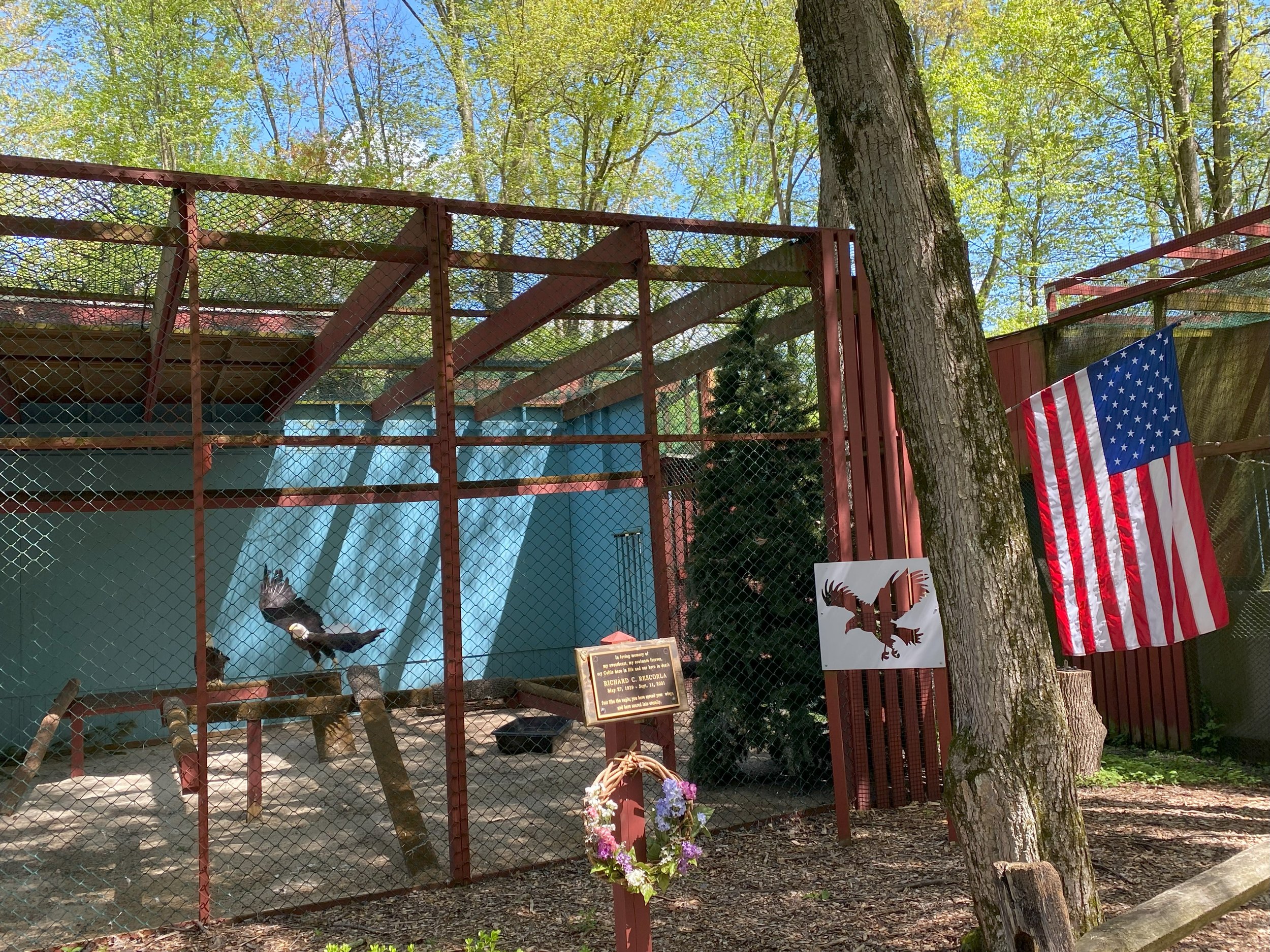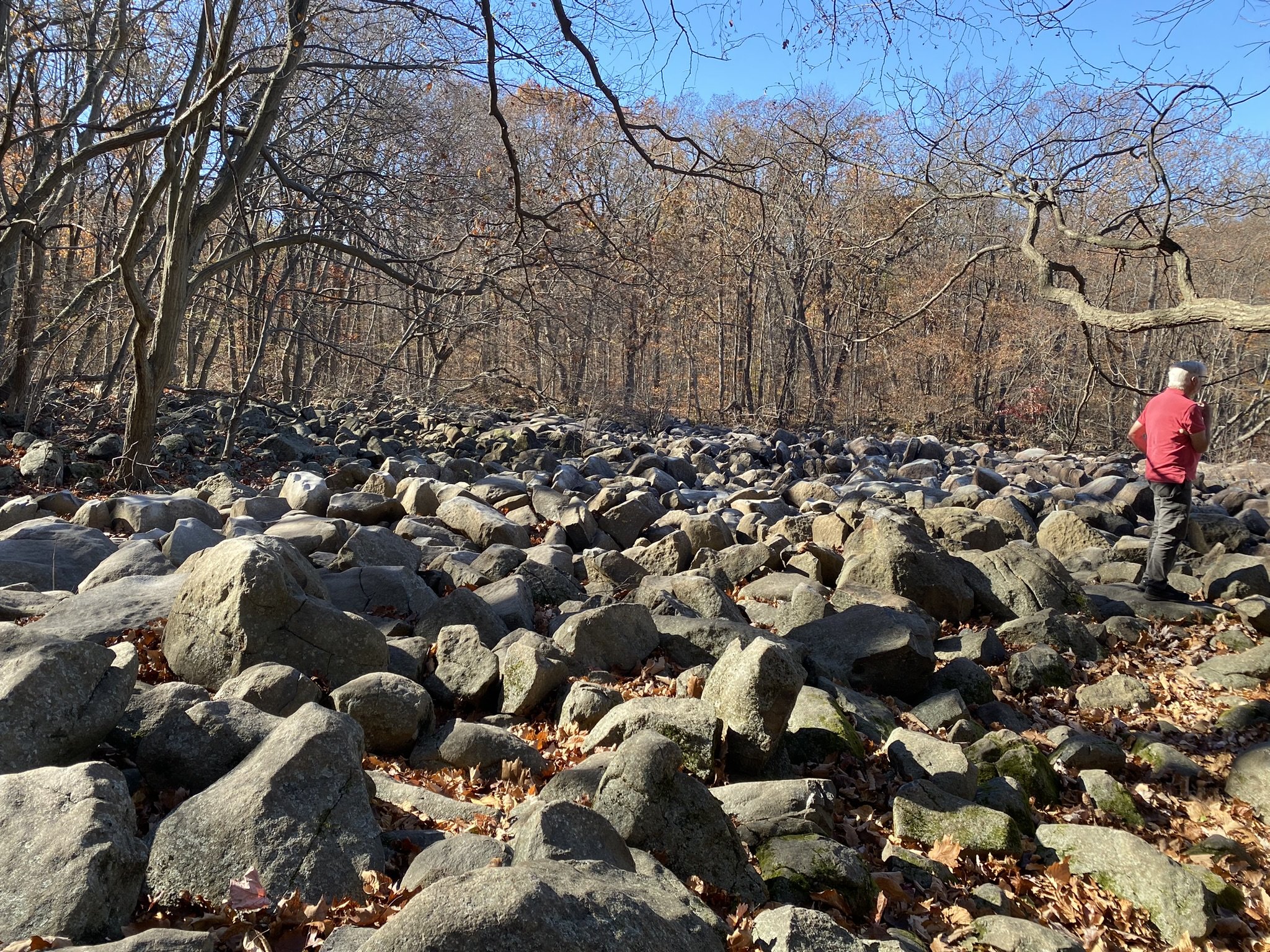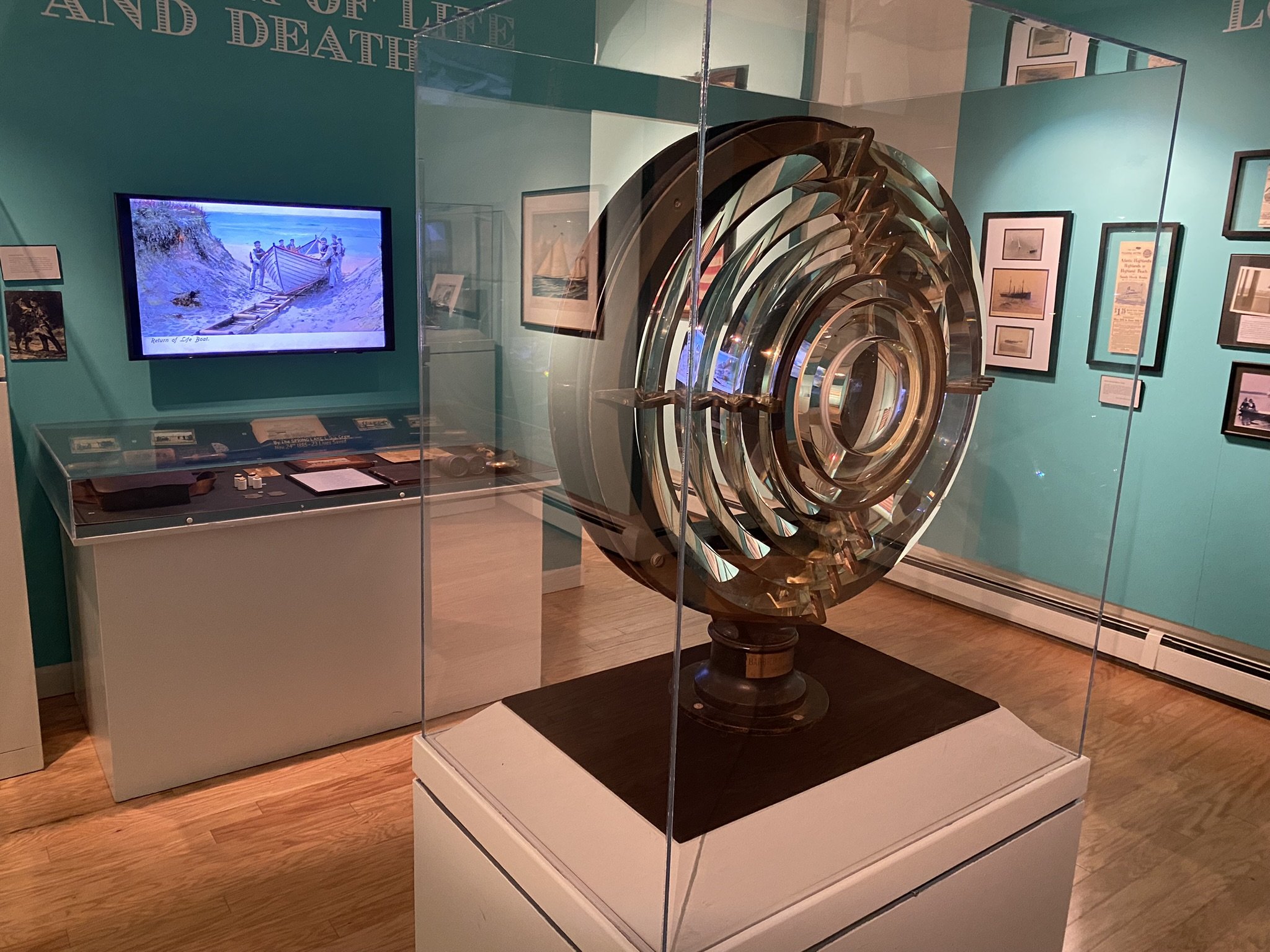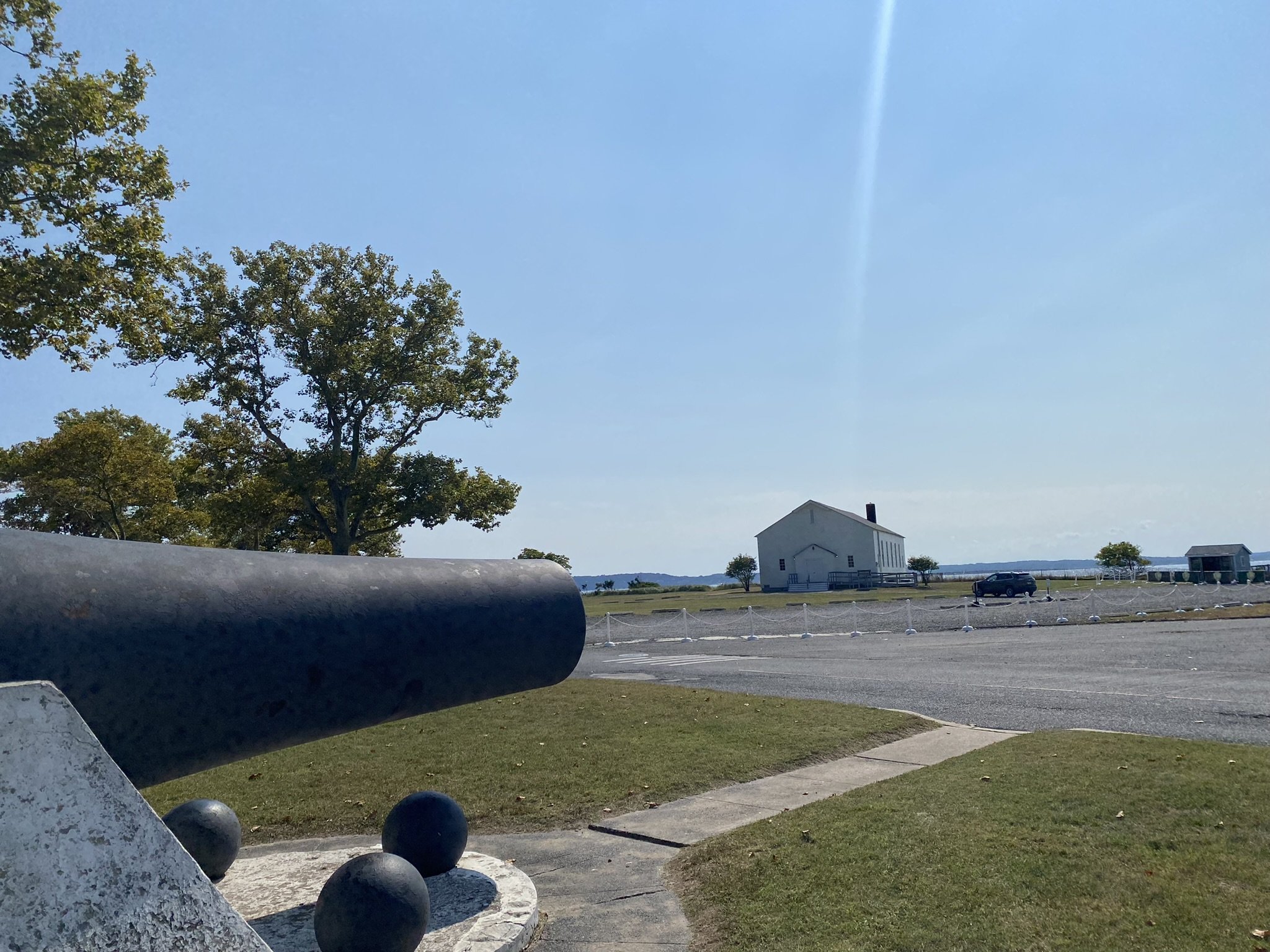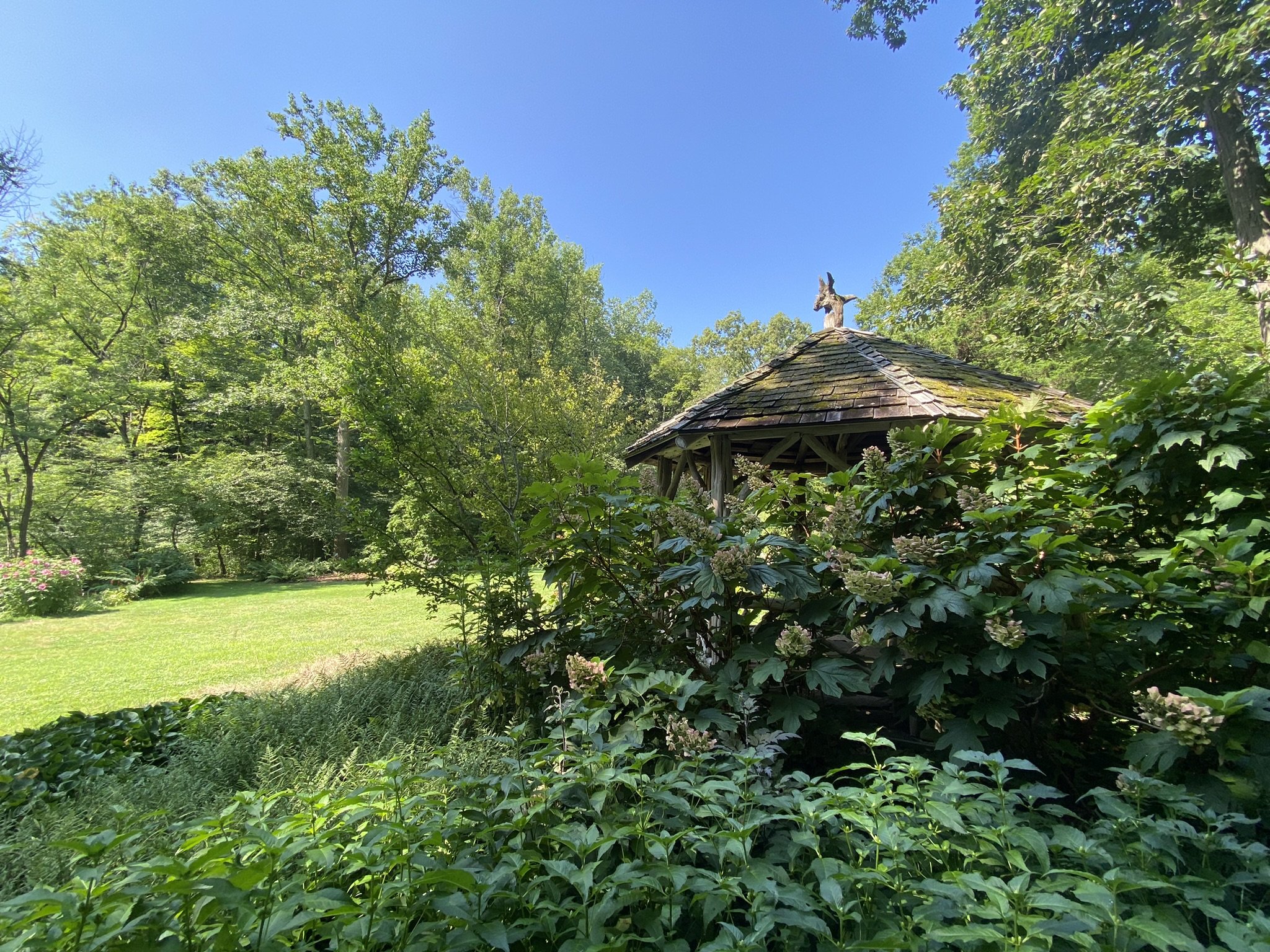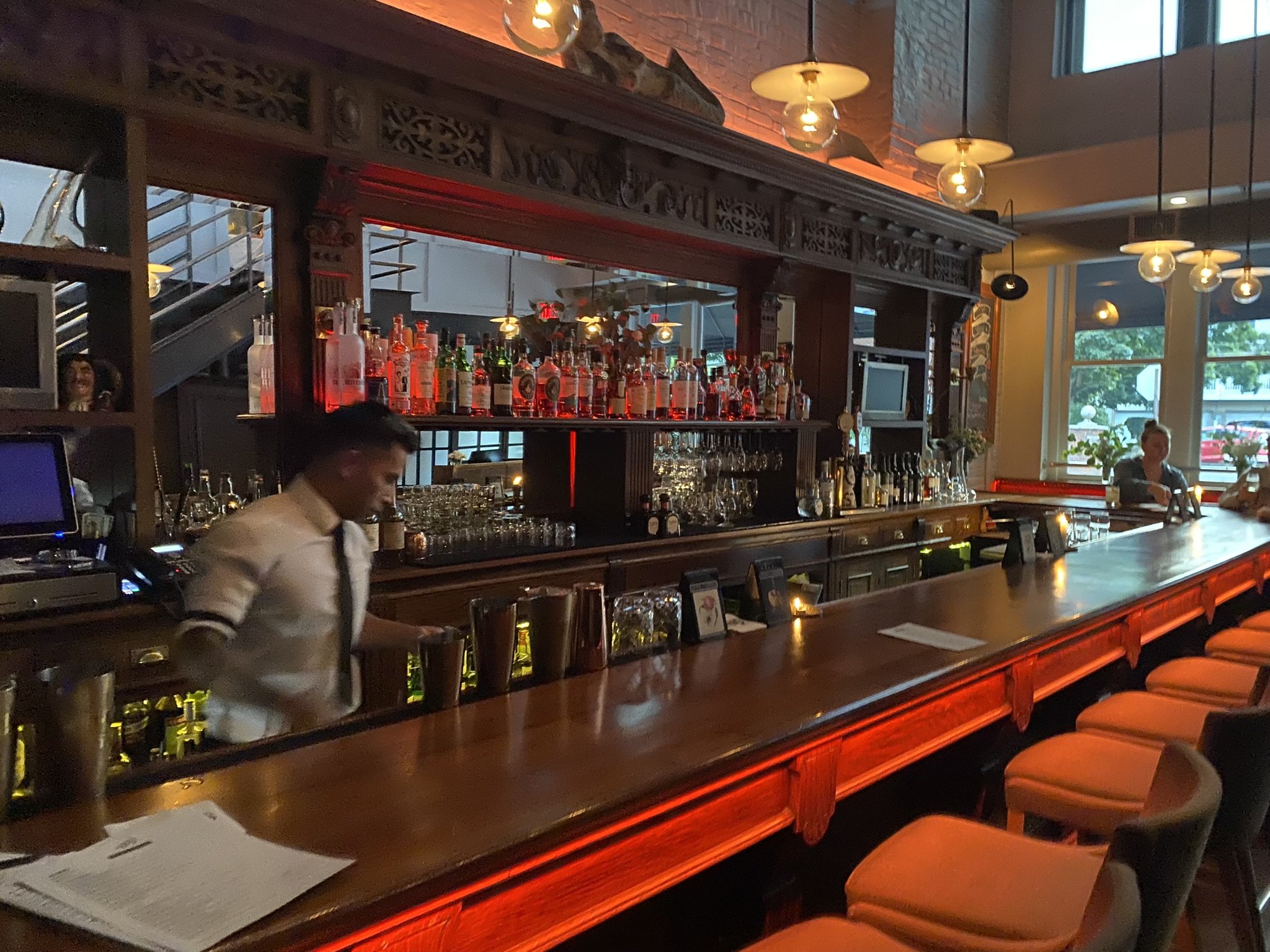Cora Hartshorn Arboretum & Bird Sanctuary
Tucked away in Short Hills, New Jersey, lies a hidden gem — 17 acres of sanctuary for native trees and birds. Short Hills itself began as a planned community by Stewart Hartshorn (derived from and pronounced “HARTS horn”), whose money came from a patent on the spring-roller window shade. He ultimately purchased 1,500 acres in the area, and his daughter, Cora, developed the arboretum, later bequeathing it to Millburn Township in 1958.
We walk along much of the arboretum’s three miles of trails that are surprisingly hilly and then spend time in the fascinating visitor’s center, with its rustic architecture and indoor beehive. A very peaceful place to spend a couple of hours.
Magic Fountain
We’ve written before about Magic Fountain, located in Summit, one of New Jersey’s many excellent ice-cream shops. But Magic Fountain specializes in an especially creamy soft-serve variety, which hits the spot after walking around the arboretum.
The Raptor Trust
It’s our day for birds. The Raptor Trust finds injured predatory birds in the wild and gives them a place to heal, allowing the public to visit for free and observe these magnificent creatures in large enclosures. We’ve visited the Raptor Trust, in Millington, many times, and do so again today on our way to dinner.
Hills of Herat
We dine at the Afghan restaurant Hills of Herat in Basking Ridge (there is also a sister restaurant in Martinsville). Afghani food presents a nice balance of moderately-spiced protein and rice. The meat is organic and halal (meaning following Islamic dietary laws), and Hills of Herat follows traditional cooking methods, with the rice blanched for a day before cooking and the meat marinated. As always in New Jersey, plenty of expats are available to support the cuisine from their homeland, and we dine among women wearing hajibs and their male companions, evidence of the restaurant’s authenticity.





